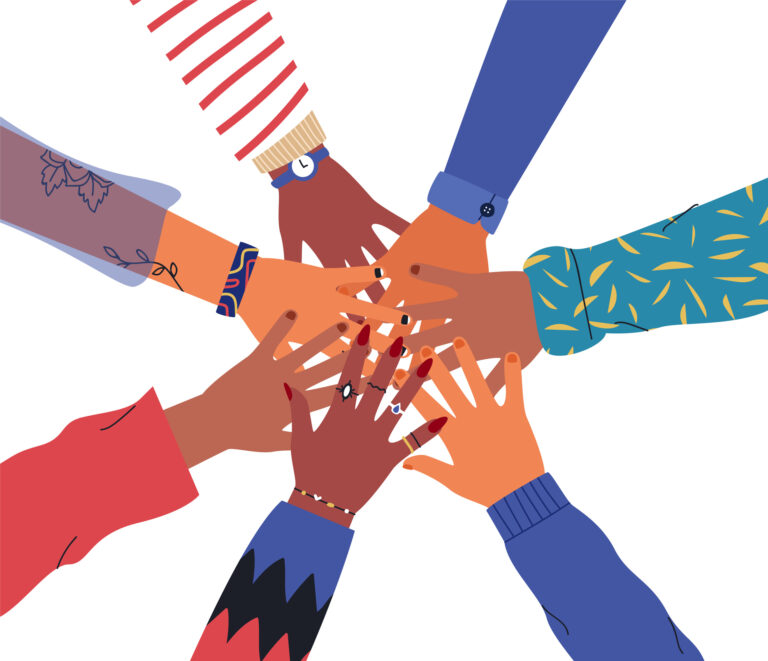From classrooms to conference rooms, Case Western Reserve University is weaving diversity, equity and inclusion into the fabric of campus life. Key to this mission is the Diversity Executive Advisory Council, which ensures each school has a voice in promoting diversity, equity and inclusion (DEI).
Working with the Office for Diversity, Equity and Inclusive Engagement, council members customize DEI goals to fit their schools, leading to significant improvements.
“When Vice President Robert Solomon and I started in our roles in 2020, we knew that this work required partnerships, and the Diversity Executive Advisory Council (DEAC) members are our partners,” said Associate Vice President and Senior Director for Faculty and Institutional Diversity Heather Burton. “They are the first point of contact within the schools to help with initiatives, goals, programs, culture and climate changes. With them in place, we are able to look at the university from a holistic lens, and their partnership and work allow for a comprehensive approach to achieving inclusive excellence at all levels of the institution.”
University-wide, DEI training and recruitment programs aim to embed these values into campus culture, creating a respectful, diverse community aligned with Case Western Reserve’s strategic plan.
Read on to learn more about the diversity liaisons and their goals.
Editor’s note: Diana Bilimoria, the KeyBank Professor and chair of the Department of Organizational Behavior at Weatherhead School of Management, is an active member of the DEAC. She was on sabbatical when interviews for this article were conducted.
Joy Bostic
College of Arts and Sciences
Associate Dean for Diversity, Equity and Inclusive Engagement, Associate Professor, Department of Religious Studies
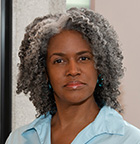
1. What inspired you to work as a diversity liaison?
I have had a long career of working with and on behalf of diverse communities and marginalized groups. Much of this comes from growing up in the Black church and the kind of community where we were always participating in issues along racial justice and service, and supporting causes for those who have been marginalized and left out. I also became an ordained minister, which was part of my theological development around what it means to create a real community. I define my approach as not only inspired by Martin Luther King’s movement or by the writings of author Toni Morrison, but through my early work at Columbia University in New York City around anti-violence initiatives in Harlem.
2. What is something everyone can do to foster an inclusive environment on campus?
Listen empathetically! Let me give you an example. When you have someone in your office or space, barriers will break down when we hear the voices of those from a different culture or a different part of the world talking to us. The personal exchange of ideas is very important, so if someone is availing themselves or me to them, those discussions lead to us understanding more and learning more. It is from here that we develop a greater understanding of what needs to be done to bring communities together and to lift up those who are underrepresented today.
Kristin Williams
School of Dental Medicine
Associate Dean for Admissions and Student Affairs
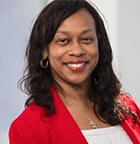
1. What inspired you to work as a diversity liaison?
As a CWRU undergrad in the mid-80s, I experienced things I thought only happened on television. Growing up in the diverse neighborhood of Shaker Heights, I didn’t know these things still happened– until they happened to me. These experiences caused me to leave CWRU and finish my undergrad at John Carroll. My father’s experience at the SODM in the 1960s also sparked my desire to create a more welcoming and inclusive atmosphere. When I returned to CWRU for dental school, I had a much different experience so I continued on to work here. I jumped at the first chance a Director of Diversity position opened up in the dental school.
2. What is something everyone can do to foster an inclusive environment on campus?
Read a book, take a class, take part in any number of diversity education programs we offer at CWRU.
Lauren Biddlecombe
Case School of Engineering
Assistant Dean, Strategic Initiatives
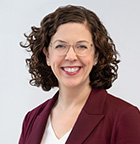
1. What inspired you to work as a diversity liaison?
I was motivated by the opportunity to work with and learn from the other members of the Advisory Committee. I am continually inspired by their wisdom and the impact they have had on their communities; it has been an honor to be included in the group. And I am inspired to serve the incredible community of faculty, staff, and students in the Case School of Engineering, and to do all I can to advance them and the school.
2. What is something everyone can do to foster an inclusive environment on campus?
Speaking from my own experience: listen, listen, and then listen some more. And while listening, be honest with yourself about your own understanding and be open to learning and growing as well. In addition to advancing one’s personal growth, a listening mindset builds a culture of trust and connection to one another and provides the foundation for actions and initiatives which advance our shared goals of a diverse and inclusive campus environment. It all starts with listening.
Bryan Adamson
School of Law
Associate Dean of Diversity and Inclusion
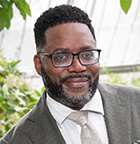
1. What inspired you to work as a diversity liaison?
I was asked to be a liaison when I became Associate Dean of Diversity and Inclusion. My role is predominantly a way for us to learn what the other schools on campus are doing and, where possible, create synergies between all the students on campus.
2. What is something everyone can do to foster an inclusive environment on campus?
Once we open ourselves up to listening, we open ourselves up to learning about perspectives and ideas that we may not otherwise expose ourselves to,” Adamson remarked. “Leaning into the differences between us is an important first step to creating an inclusive environment.
Scott Wilkes
Jack, Joseph and Morton Mandel School of Applied Social Sciences
Associate Dean for Equity and Innovation
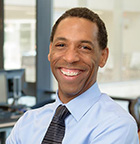
1. What inspired you to work as a diversity liaison?
Although I am relatively new to this role and specific type of work, as a social worker, I have always been firmly grounded in social justice and advocating for the rights of underserved, vulnerable and marginalized populations. Early in my career, I witnessed firsthand the devastating impact of disproportionality within the juvenile court system. Sadly, we still confront disproportionality in many of our systems, including higher education. So I’m excited to join a team of other diversity liaisons across campus working together on the Diversity Executive Advisory Council. I approach my work as a diversity liaison from a place of great humility and willingness to learn from others who have extensive experience in this realm. I very much appreciate the interdisciplinarity approach and hope to contribute by lending my voice and unique perspective.
2. What is something everyone can do to foster an inclusive environment on campus?
Let’s first acknowledge that the work we all must do to foster an inclusive environment is difficult. It takes constant vigilance and dedication. With that said, I believe one of the simplest things we can do to foster inclusion is to just say, “hello.” The simplest gestures can have a powerful impact. Saying “hello” conveys to others that they are seen, acknowledged and welcomed. It is the start of a connection that can grow into something meaningful for the individual and our community.
Adrianne Crawford Fletcher
School of Medicine
Vice Dean, Diversity, Equity and Inclusive Excellence
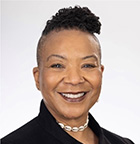
1. What inspired you to work as a diversity liaison?
I was honored to be appointed as a diversity liaison representing the School of Medicine to the Diversity Executive Advisory Council by the CWRU DEI Office. It is important to problem solve together as a council, highlight activities at the different schools, cultivate a safe environment for diversity work and meeting our goals. There are challenges and opportunities as the culture at CWRU and our broader community changes. The culture is always evolving. We have a choice to be ahead of the curve. It’s great to have the opportunity to engage with other DEI leaders and staff on campus. There are different ways to go about this as we go through the backlash we have experienced about DEI. The key is engagement, and how we engage with each other.
2. What is something everyone can do to foster an inclusive environment on campus?
We can all help to foster an inclusive environment. It starts by becoming very self aware and having a sense of yourself. My formative years helped to shape who and how I am. I encourage people to think about those formative experiences and how they influence them, too. Biases are not bad in of themself, they are part of the human condition. We each have our own way of thinking and knowing.
I like to take a stance of not knowing when I think about other people and their perspectives. We make assumptions about people in a nano moment. Being thoughtful and open is so important. The chances of us engaging in a meaningful way increases exponentially. The door is open for someone to tell me who you are rather than making assumptions. I want to get to know you. That’s how I approach this work.
I believe in using preemptive forgiveness. I tell people, let’s listen and practice forgiveness–sometimes we’re going to blow it, we’re going to make a mistake and that’s ok. We can learn from each other and grow.
Read more about Crawford Fletcher.
Camille Warner
Frances Payne Bolton School of Nursing
Associate Dean for Diversity, Equity and Inclusion
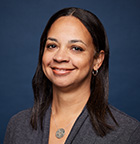
1. What inspired you to work as a diversity liaison?
In short, because it matters! In my personal and professional life, I have always strived to make a positive impact in a world that is not a level field for all people. I believe that advocating for the vulnerable and marginalized members of society is possible while uplifting all people. I take to heart the values and practices of diversity, equity, justice, inclusion, and belonging and I continually challenge myself and others to move beyond dialogue to action.
2. What is something everyone can do to foster an inclusive environment on campus?
Start by paying attention to your immediate environment and surroundings (e.g., classrooms, labs, boardrooms, dorms, cafeterias, and athletic facilities). Take note of who is there (and their roles) in those spaces and who may be missing? Be intentional to include and invite people in public and social settings (e.g., dining, face-to-face gatherings, conversations) to create and foster authentic connections. Additionally, do your part to ensure diverse representation in the decision-making, practices, and policies that contribute to an equitable and just campus. A sense of belonging and respect for all members of our campus are critical components to our success as a school and university.
Deborah Bibb
Weatherhead School of Management
Executive Director, Enrollment, Career Development and Student Experience
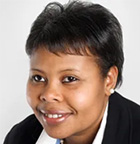
1. What inspired you to work as a diversity liaison?
I went through a personal journey in my undergraduate studies at Ohio State that showed me what inclusivity meant and what it didn’t. That experience inspired me to want to bring people together at Weatherhead and make them realize that DEI isn’t a one and done effort. A continuum needs to happen and a reward system in place to motivate change and keep the momentum going and that represents the inclusivity of all people’s thoughts and ideas.
2. What is something everyone can do to foster an inclusive environment on campus?
I think training is the answer. For faculty and staff I think we need to give people the proper tools to help them better understand learning styles, which are different for each person. If we foster an environment where we can help bridges, there will be an acceptance of our differences and the cultures that make us all unique. For students, I think it’s getting involved with the many multicultural organizations and affinity groups we have on campus.We need to create opportunities for people to interact with one another with a fair exchange of ideas and which are a representation of the core values of Weatherhead.


